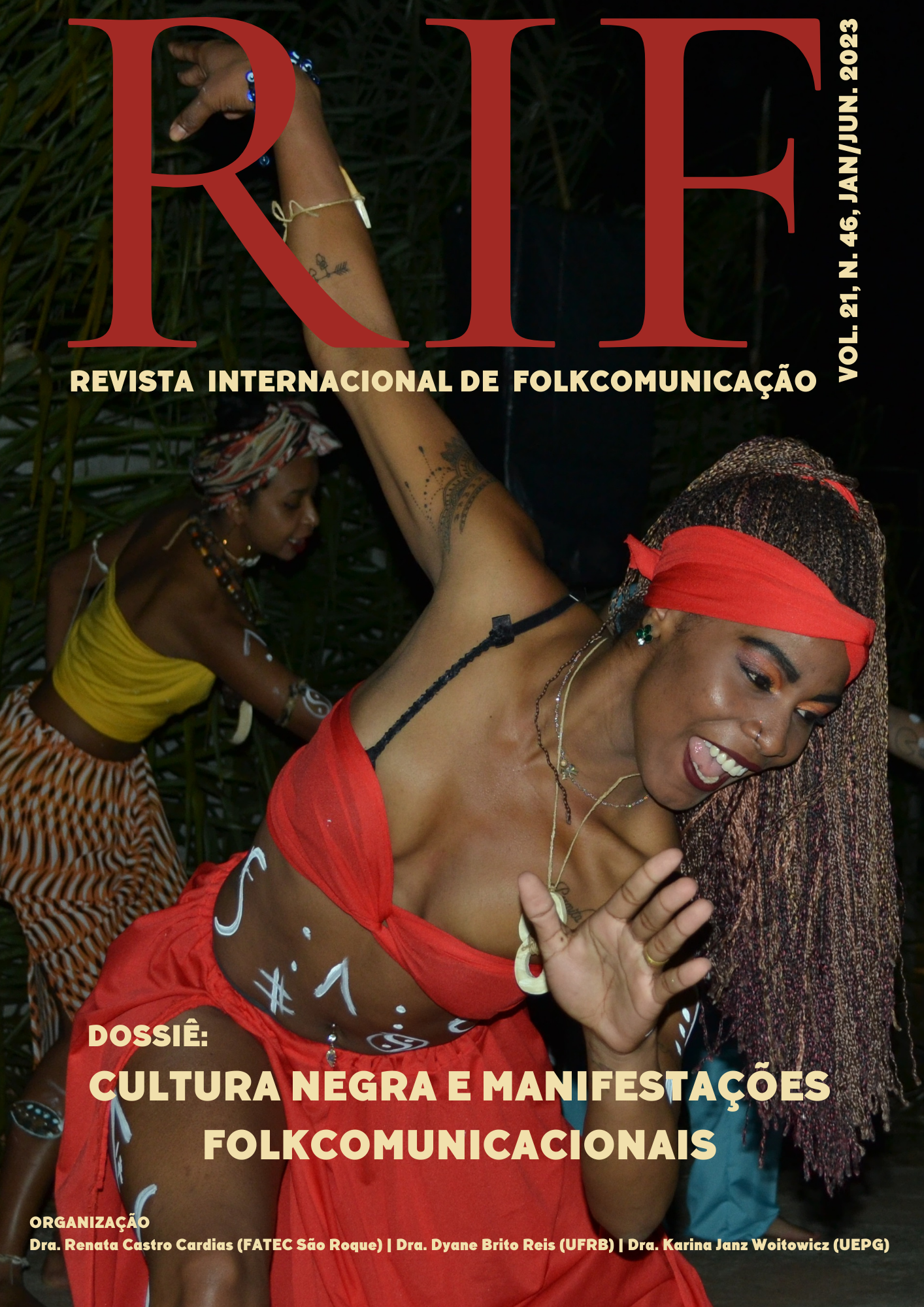Contemporary Art and Candomblé
a semiotic, a diagram of Afro-Brazilian culture
Abstract
Diversity is a key characteristic of Brazilian culture, greatly influenced by the heritage of African diaspora peoples in the fields of aesthetics and religion. Both contemporary Art and Candomblé reflect a vibrant Africa that asserts its unique identity and reclaims ancestral roots through chants, crossroads, and artworks. This study aims to create a diagram, a semiotics of “terreiro”, with art and Candomblé as privileged expressions of the symbolic crossroad that signifies the black heritage in Brazilian culture—a resilient force. Barthesian semiotics guide us to question signification and image, and Deleuzian philosophy provides theoretical support of a diagram to explore our constitutive ancestry, where Candomblé and Art serve as starting points on an open path, transcending texts and their meanings, encompassing the aesthetic experience of this works and reflecting it to the texts. This article is the outcome of a broader study investigating the concept of ancestrality in audiovisual media and aimed to define a cartography that could potentially diagram artworks created by Black individuals in Brazil. Within this framework, we present an analysis of Clébson Francisco's multimedia works, an artist from Ceará.
Downloads
References
BARROS, Marcelo; MAURÍCIO, George; OXAGUIÃ, Vera de; O candomblé bem explicado:
(Nações Bantu, Iorubá e Fon). Pallas, 2009.
BARTHES R. Mitologias. Rio de Janeiro: Editora Bertrand Brasil, 1993.
BERGSON, Enri. Matière et mémoire. Quadrillage/Presses Universitaire de France, Paris,
CONDURU, Roberto. Arte Afro-Brasileira. Belo Horizonte: Editora C/arte, 2007.
CLEVELAND, Kimberly L. Black art in Brazil - expressions of identity. University Press of
California, 2014.
DELEUZE, G. L´anti-édipe. Paris: Gallimard, 1972.
DELEUZE, Gilles et GUATTARI, Félix. Mille Plateaux. Capitalisme et schizophrénie, Éditions
de Minuit, Paris, 1980.
DELEUZE, Gilles; GUATTARI, Félix. Mil platôs: capitalismo e esquizofrenia. Vol 2. Rio de
Janeiro: Ed. 34, 1995.
DELEUZE, Gilles; GUATTARI, Félix. Mil platôs: capitalismo e esquizofrenia. Vol 5. Rio De
Janeiro: Ed. 34, 1997.
DELEUZE, Gilles; GUATTARI, Félix. O Anti-Édipo. São Paulo, SP: Ed. 34. 2010.
DELEUZE, Cinema 2: imagem-tempo; p.p 88–89, São Paulo: Brasiliense, 2005.
DELEUZE, G.; GUATTARI, F. Kafka: Por uma literatura menor. Belo Horizonte: Autêntica,
FOUCAULT, Michel. A ordem do discurso. São Paulo: Edição Loyola, 1996.
FOUCAULT, Michel. Microfisica do poder. Rio de Janeiro, Ed. Graal. 1979.
FRANCISCO, Clébson. Querid_ Fantasma ©️ | A série de vídeos. Clébson Francisco –
artista visual multilinguagem, 2016. Disponível em:
https://clebson.com/queridfantasma/videos/. Acesso em: 17 maio 2021.
FRANCISCO, Clébson. Querid_ Fantasma ©️ As sete cartas que tenho pra te dar. Clébson
Francisco – artista visual multilinguagem, 2018. Disponível em:
https://clebson.com/queridfantasma/assetecartasquetenhopratedar/. Acesso em: 17
maio 2021.
FLUSSER, V. Pós-História: vinte instantâneos e um modo de usar. São Paulo: Annablume,
hooks, bell. Olhares negros: raça e representação. Tradução de Stephanie Borges.
São Paulo: Elefante, 2019.
DIDI-HUBERMAN, George. Diante do Tempo: história da arte e anacronismo das imagens.
Belo Horizonte: Editora UFMG, 2015.
MENEZES NETO, H. S. Entre o visível e o oculto: a construção do conceito de arte afrobrasileira.
235 f. Dissertação (Mestrado em Antropologia Social) – USP, São Paulo,
SANTOS, Antonio Bispo. Colonização, Quilombos: Modos e Significações. Brasília: Instituto
de Inclusão no Ensino Superior e na Pesquisa, 2015.
SOUZA, N. Ouça os ancestrais: Sabedoria da Ebomi Dona Cici. Transcrito por Cammelia D.
Lee. 2020.
Published
How to Cite
Issue
Section
License

Este obra está licenciado com uma Licença Creative Commons Atribuição 4.0 Internacional.
Os autores são responsáveis, em qualquer que seja o formato do texto, pelas opiniões expressas ou indiretas presentes em seus respectivos trabalhos, não endossáveis pelo Conselho Editorial e pelos editores da Revista, bem como pela autenticidade do trabalho. Ao publicar trabalhos na Revista Internacional de Folkcomunicação, os autores cedem automaticamente os direitos autorais à publicação para veiculação das produções acadêmicas, sem ônus para a Revista. Os autores detêm os direitos autorais do texto para o caso de publicações posteriores e concedem à Revista Internacional de Folkcomunicação o direito de primeira publicação, com o trabalho simultaneamente licenciado sob a Creative Commons Attribution License, que permite o compartilhamento do trabalho com reconhecimento da autoria e publicação inicial nesta Revista. Por serem publicados em revista de acesso livre, os artigos são de uso gratuito, com atribuições próprias, em atividades educacionais e não-comerciais, sendo permitida a publicação simultânea em repositórios institucionais.































